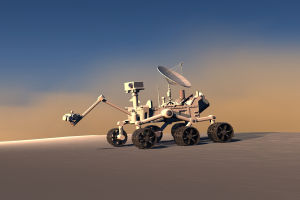The telescope stands as a crucial instrument in humanity's quest to explore the universe.
Its invention and subsequent advancements have dramatically transformed our comprehension of the cosmos.
The telescope's origins date back to the early 17th century. In 1608, Hans Lippershey, a Dutch spectacle maker, demonstrated the first device capable of magnifying distant objects. Although Lippershey was not a scientist, his invention quickly captured the scientific community's interest.
It was Galileo Galilei, an Italian scientist, who truly revolutionized the telescope. In 1609, Galileo improved upon the original design and began using his enhanced telescope to observe celestial phenomena. His observations included the phases of the moon, Jupiter and its moons, and the planet Venus.
These findings not only unveiled new mysteries of the universe but also challenged the prevailing geocentric theory, laying the groundwork for modern astronomy.
As science and technology advanced, so too did the technology of telescopes. In the 17th century, Isaac Newton created the reflecting telescope. This innovation utilized mirrors to reflect light, thereby overcoming the chromatic aberration problem present in refracting telescopes.
Newton’s design allowed for the creation of larger and more powerful telescopes. By the 20th century, rapid technological progress enabled astronomers to extend observations beyond the confines of Earth.
The launch of the Hubble Space Telescope significantly broadened our view of the universe, providing clearer and more distant observations.
Various types of telescopes cater to different observational needs. Optical telescopes, for instance, are used to observe celestial bodies within the visible light spectrum and are categorized into refracting and reflecting telescopes.
Refracting telescopes use lenses and are generally suited for observing nearby celestial objects, whereas reflecting telescopes use mirrors and are more effective for deep-space observations. Radio telescopes, on the other hand, detect radio waves emitted by celestial bodies.
They are capable of penetrating dust clouds and revealing structures that optical telescopes might miss. For example, China’s Five-hundred-meter Aperture Spherical Radio Telescope (FAST) is the world's largest single-dish radio telescope, with a diameter of 500 meters.
Space telescopes, such as the Hubble and James Webb telescopes, are positioned outside Earth’s atmosphere, thereby avoiding atmospheric interference and enabling observations across a broader range of electromagnetic radiation.
The invention and utilization of telescopes have profoundly impacted science. They have not only allowed for the verification and enhancement of astronomical theories but also facilitated our understanding of the structure, evolution, and interaction of celestial bodies.
Through telescopic observations, countless galaxies, stars, and planets have been discovered, underscoring the vastness of the universe and affirming that Earth is not its center.
Additionally, the research outcomes from radio telescopes have provided theoretical support for advancements in satellite communications and navigation systems. The development of telescopes has also propelled progress in related fields such as optics, materials science, and computer technology.
Moreover, the widespread availability of telescopes has significantly influenced public understanding of the universe. Today, an increasing number of amateur astronomy enthusiasts engage in astronomical observations.
Telescopes provide individuals with the chance to witness the splendor of the night sky firsthand, fostering a deeper interest in science and a greater sense of wonder about the cosmos.
Looking ahead, telescope technology is poised for continued advancement. For instance, the James Webb Space Telescope boasts enhanced infrared observation capabilities and is anticipated to unveil the mysteries of the early universe.
Future developments include the deployment of large ground-based telescopes, such as the European Extremely Large Telescope (ELT), which promise to further refine observational accuracy and extend observational range.
Additionally, emerging observational methods like gravitational wave astronomy and neutrino astronomy are expected to integrate with traditional telescope technology, ushering in a new era of astronomical discovery.


